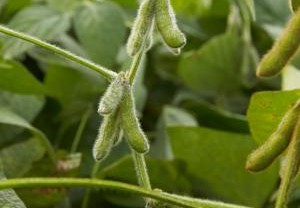By Dow AgroSciences November 12, 2015 | 8:15 am EST
It’s important to evaluate the short-term and long-term impact of crop inputs, such as weed control and fertility programs, because they affect this year’s bottom line and field productivity for the next three to five years.
It’s important to evaluate the short-term and long-term impact of crop inputs, such as weed control and fertility programs, because they affect this year’s bottom line and field productivity for the next three to five years.
It’s no secret that low corn and soybean commodity prices are challenging growers as they make plans for next season, leading to the question, “Where can I trim costs without decreasing yield and increasing pest pressure?”
Mycogen Seeds Commercial Agronomist John Long says crop inputs are not the place to cut corners. Crop inputs impact both this year’s bottom line and long-term field productivity. Cutting crucial crop needs one year may cause long-term consequences in following years.
“Growers spend time and resources selecting the right seed for their fields, considering herbicide tolerances and seed treatments even before the crop is planted,” Long says. “After planting, the right nutrients and herbicide program can help the seed reach its full genetic potential. At the end of the season, that means more bushels in the bin.”
Long suggests four crop inputs that should not be scaled back in 2016.
Trait packages. Insect trait packages protect against yield-robbing pests, like corn rootworm, black cutworm and corn earworm. These insects tunnel into the cornstalk and roots, which can lead to standability issues, including stalk rot and breakage.
“This season’s heavy rains suppressed much of the corn rootworm feeding,” Long says. Growers should keep in mind, though, corn rootworm eggs can remain dormant for up to three years. Without below-ground insect trait protection, growers may experience considerable damage in fields they thought were free of the insect.
Soybean seed treatments. As growers plant soybeans earlier and on more acres, seed treatments are essential for increasing the stand and vigor of seedlings. Seed treatments, usually a combination of fungicides, insecticides, nematicides, plant growth regulators and inoculants, help protect soybeans planted in wet, cool soils from soil fungus and insects. A seed treatment also will help the plant tolerate diseases.
“Combining a seed treatment with genetic tolerance to diseases will provide the best season-long protection,” Long says. Mycogen Seeds breeds soybean varieties for overall plant health and tolerance to many of the industry’s most harmful diseases, including sudden death syndrome and white mold.
Growers can work with their local seed dealer to determine the right soybean genetics and seed treatment for their fields.
Herbicide applications. Wet weather in 2015 prevented timely pre- and postemergence herbicide applications, resulting in numerous weed escapes, increased weed pressure and resistant weeds.
“This year’s seeds are next year’s weeds,” Long says. “Stay ahead of weed problems by starting with residual herbicides with multiple modes of action and diligently managing weeds throughout the season when they are small.”
Fertilizer applications. It takes years for a fertility program to raise soil nutrient levels to where they need to be for profitable crop production. Cuts in fertilizer for one or two years means increased costs in the next three to five years to build the soil back up.
“With so much rainfall in 2015, even the best nitrogen management practices were not bulletproof,” Long says. He recommends stabilizing nitrogen applications to help keep nitrogen in the root zone where the plant needs it.
Long says many growers ask about trimming phosphorus (P) and potassium (K), but know that continuous corn depletes P and K. Not replacing P and K will result in diminishing returns and yield reductions.
As growers seek to maximize their investment in crop inputs in 2016, it is critical that they understand the long-term consequences of these management decisions. “These four crop inputs should remain in your 2016 plans,” Long says. “The value each provides almost always exceeds the initial cost of the input.”

